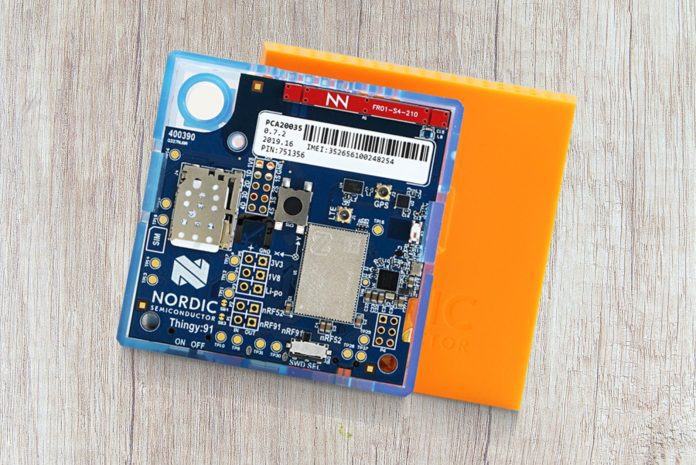Nordic Semiconductor is now offering embedded machine learning (ML) software with its cellular-based IoT chipset portfolio. The move continues its partnership with US-based Edge Impulse, which makes miniaturised ML (‘TinyML’) tools for chips in resource-constrained IoT modules. The pair announced TinyML support for the Norway firm’s nRF52 and nRF53 series of Bluetooth Low Energy (BLE) chips at the start of the year.
It is now offering the same with its nRF9160 development kit and Thingy:91 prototyping platform, which both combine the company’s cellular-based low-power wide-area (LPWA) nRF9160 system-in-package (SiP), offering dual-mode NB-IoT and LTE-M, plus GPS, on the same developer board as its low-power short-range nRF52 BLE unit. It said IoT designers can now add TinyML to their nRF9160 SiP prototypes.
TinyML is a scaled-down form of ML suitable for IoT edge devices such as wireless sensors. It makes cloud-based ML training and model synthesis “simpler and faster”, said Nordic Semiconductor, compared with conventional techniques that rely on server training of large and complex models. Lightweight TinyML models run efficiently on the optimized compute resources of the target edge devices.
Both the nRF9160 and Thingy:91 development units, used for prototyping of cellular IoT products, as well as hybrid short- and long-range devices, have been integrated into the Edge Impulse Studio platform, used to collect data from sensors, train ML models, and deploy ML models onto target devices. The availability on the Edge Impulse developer platform allows developers without any TinyML expertise to get started on ‘inferencing’ (applied ML) at device level.
The nRF9160 SiP, on which the nRF9160 development kit and Thingy:91 prototyping platform are based, features an Arm Cortex-M33 application processor, which provides the ‘grunt’ power to drive the TinyML functions. It also has 1MB Flash and 256KB of RAM.
Joakim Tønnesen, technical product manager at Nordic Semiconductor, commented: “The introduction of TinyML for nRF9160 SiP-based low power cellular IoT applications allows developers to quickly move beyond experimenting with ML code and building up expertise. Instead, developers can focus on the best way to use their hard-won data as the foundation of innovative and exciting cellular IoT applications.”

